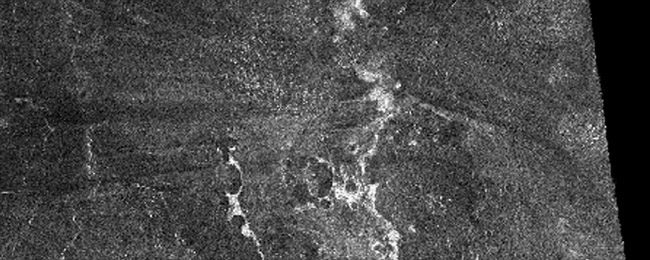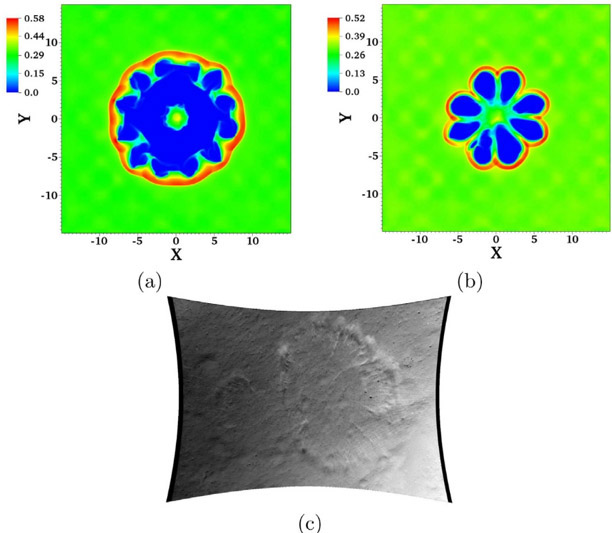
Planetary science, geophysics, and geosciences studies at JPL focus on the solid bodies of the Solar System, with particular emphasis on terrestrial-like planets and major satellites. Research in this area includes:
- tectonics
- volcanology
- impact processes (including cratering)
- geologic mapping
- surface geochemistry, mineralogy, and morphology
Current Challenges

Geoscience research at the Jet Propulsion Laboratory centers on planetary bodies including Mars, Earth, Venus, Moon, Io, and Europa. These bodies are studied using several methods, including image interpretation (visible, infrared, radar), laboratory work, field work, infrared spectroscopy, geophysical data interpretation, modeling and laboratory work.
Research efforts originate from a variety of NASA and JPL programs, including:
- Mars Data Analysis
- Solar Systems Working
- Emerging Worlds
- Habitable Worlds
- Cratering (and its impacts on gravity and atmospheric density)
- Planetary Data Archiving, Restoration, and Tools
- Lunar and Mars Data Analysis
- Flight instrument teams
- JPL Research and Technology Development